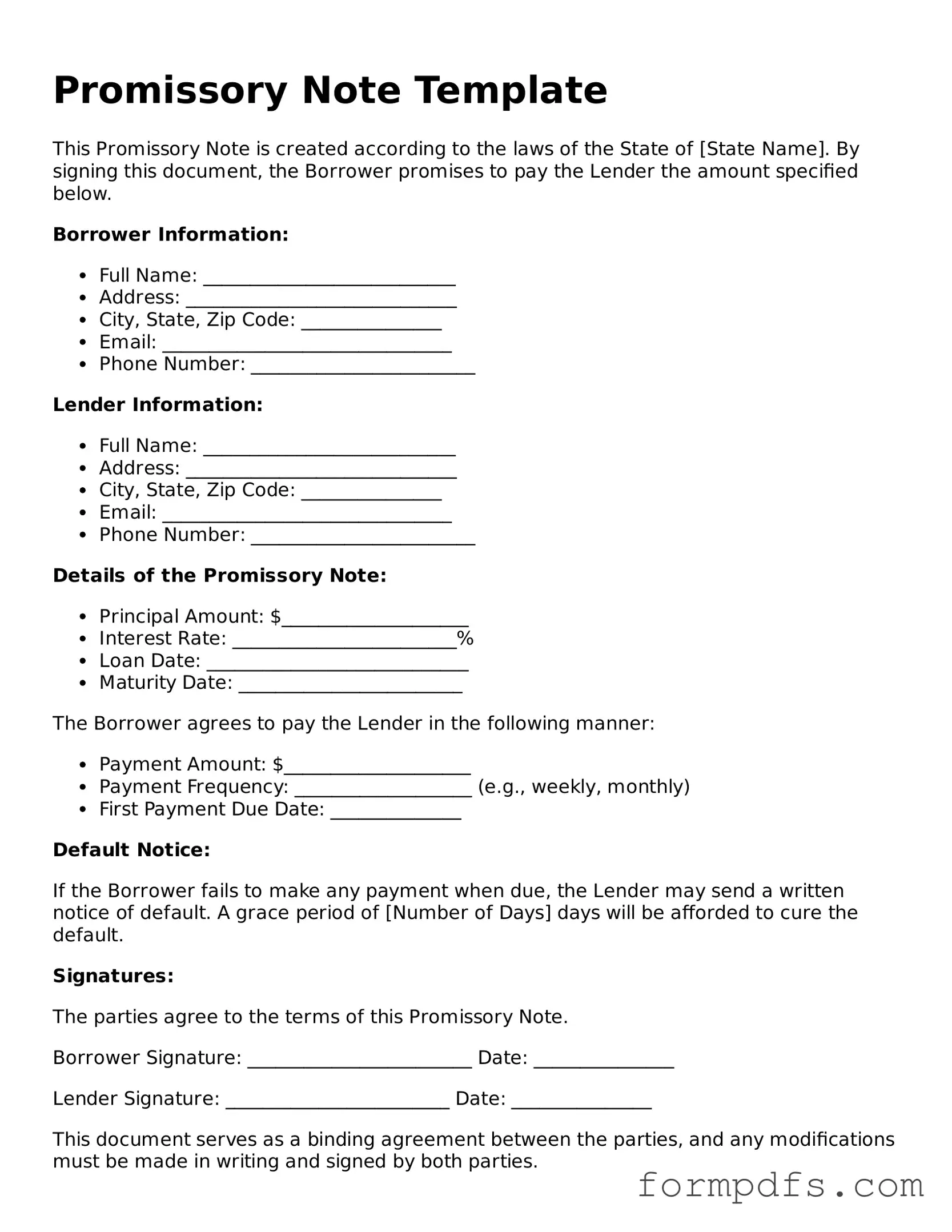What is a Promissory Note?
A promissory note is a written promise to pay a specified amount of money to a designated person or entity at a future date or on demand. It outlines the terms of the loan, including the interest rate, payment schedule, and any penalties for late payments. This document serves as a legal record of the debt and can be enforced in court if necessary.
Who uses a Promissory Note?
Promissory notes are commonly used by individuals and businesses. They can be used in personal loans between friends or family members, as well as in formal lending situations involving banks or financial institutions. Businesses might use them to secure financing or to document transactions with suppliers or clients.
What are the key components of a Promissory Note?
Key components of a promissory note include the names of the borrower and lender, the principal amount, the interest rate, the payment schedule, and the maturity date. It may also include terms regarding late fees, prepayment options, and any collateral securing the loan. Clear and precise wording is crucial to avoid misunderstandings.
Is a Promissory Note legally binding?
Yes, a promissory note is legally binding as long as it meets certain criteria. It must be signed by the borrower and should include all essential terms. If the borrower fails to repay the loan as agreed, the lender has the right to take legal action to recover the owed amount. Having the document properly executed strengthens its enforceability.
Can a Promissory Note be modified?
Yes, a promissory note can be modified if both the borrower and lender agree to the changes. This may involve altering the payment terms, interest rate, or other conditions. It’s important to document any modifications in writing and have both parties sign the amended note to ensure clarity and legal validity.
